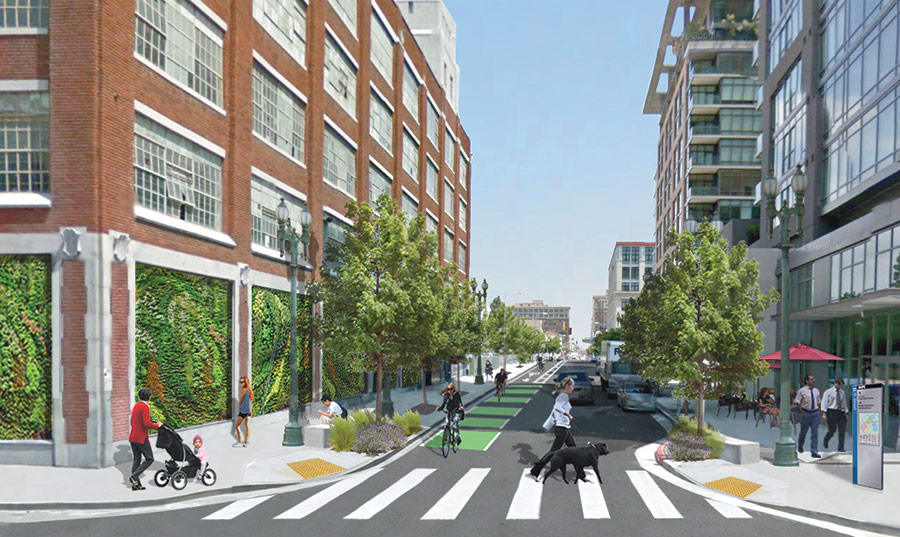
If advocates for MyFigueroa, the LA Department of Transportation (LADOT)–managed initiative to transform Figueroa Boulevard from downtown to Exposition Park into a multimodal streetscape get their wish, one of Los Angeles’ busiest and most historic thoroughfares will re-emerge as a biker’s and walker’s paradise. (It could be the first of many: On October 10, Mayor Eric Garcetti launched a program to improve up to forty streets across the city). But it may not happen if the path doesn’t commence construction by January as scheduled. In order to not default on the $30 million Proposition 1C grant the project was awarded in 2010, all work must be completed by December 2014. While the LADOT is moving ahead, some intense local opposition may cause delays that could put the project at risk.
The plan would reduce the number of lanes on South Figueroa from five to four and add fully separated bicycle lanes, new trees and landscaping, bicycle and mass transit amenities, public art, high-visibility continental crosswalks, LED streetlights, and pedestrian scale lighting. Local urban planning/design firms Melendrez and Troller Mayer Associates collaborated with Copenhagen’s Gehl Architects to produce what could be one of Los Angeles’ most innovative and truly urban streetscapes.
One of the plan’s most vocal opponents is Darryl Holter, who owns seven car dealerships along a stretch of the project adjacent to USC. Because of this opposition, and due to the results of an early city traffic study, cycle tracks were eliminated from the stretch from Venice to 23rd Street and another auto lane was added. Holter is still concerned that the project will make it harder for customers to reach his lots. The Southern California Auto Club, with its headquarters at the corner of Adams and Figueroa, has also expressed concerns about traffic impacts and a loss of street parking.
“We’re doing something that has never been done in Los Angeles before, and we’re doing it on a very trafficked street,” said Holter in a recent article.
|
|
||
District 9’s new councilmember, Curren Price, echoed concerned stakeholders like Holter, putting forward legislation that would require further “in-depth” traffic studies. This motion came as a surprise since the Council recently certified LA City Planning’s Final Environmental Impact Report, which includes traffic studies of the effected areas. At a recent session hosted by the Los Angeles chapter of the AIA, Price said, “Let’s not rush through it. Let’s make it a good deal for everybody.”
There has been speculation that this “everybody” is, in fact, Mr. Holter, who himself recently filed a hand-written appeal stating that “many businesses will be negatively impacted by the proposed project.” Holter was a supporter of Price during his election.
For the time being, Price’s motion and Holter’s appeal have yet to cause significant delay, and the project team is proceeding in anticipation that work will begin before January 2014. The City Attorney has recommended that both the motion and the appeal be reviewed together by the City Council’s Transportation Committee and then by a full City Council. Dates for this remain undetermined.